- Home
- Glynn Stewart
Operation Medusa Page 2
Operation Medusa Read online
Page 2
The Midorian King Cobra-type fighters weren’t as capable, but their EW was easily a match of that of the Terran’s seventh-generation Katana-type starfighter.
Which meant that when Task Force Midori’s starfighters activated the Spartacus Protocol, the starfighter strike went from being roughly ten percent bombers to appearing to be all bombers. And, in Rokos’s own contribution—learned from the Stellar Fox—all of their bombers were pretending to be starfighters.
Starfighters that were pretending to be bombers.
“I only make it nine hundred Katanas,” Hu noted. “Shouldn’t they have over a thousand starfighters?”
“They should,” Russell confirmed to his gunner. “That means the other hundred and fifty are Longbows and they’re holding them back.”
For the Alliance, the bombers were the key to this strike. For the Terrans, they were entirely unnecessary.
“Thirty-six minutes to fighter-missile range,” Hu reported. “Forty-two to positron-lance range. Fifty-one to closest approach to the Terran starships.”
“Make sure the tactical net is running cleanly and in random-swap mode,” Russell ordered. “And if our Terran friends have had an unexpected moment of incompetence and aren’t running in random-swap mode, feel free to designate their command ships for everyone else.”
Hu laughed bitterly.
“Not a chance,” he replied. “These guys know their business.”
Russell nodded.
Like Admiral Rothenberg had said, the Commonwealth had sent their A game. Terran biases meant they hadn’t brought enough starfighters, and they were going to pay for that mistake, but there was no way the Alliance could hold Midori.
All they could do was hurt Walkingstick’s people.
The human brain interacted with neural implants in odd ways. Some people interpreted the data from the implant faster or more easily than others. Some simply processed more data at once. Some could process less data simultaneously, but did so faster than others.
All of that capacity was lumped under the generic term of “bandwidth”—and to be a starfighter pilot, gunner, or flight engineer, a recruit had to be in the top half-percentile of the human race for it.
Vice Commodore Russell Rokos was in the top half of the people who could fly starfighters, but as the two forces rushed together, even his ability to process the data his Falcon-C command ship was throwing at him was strained.
He was tracking the vectors and targeting lines of nine hundred Terran starfighters, watching to see if there was any change in their pattern that suggested they’d identified the bombers.
He was tracking the vectors and lines of fire of all almost two hundred of his own starfighters, plus surveying the electronic-warfare efforts being coordinated by his subordinates.
On top of that, he was flying his own starfighter, keeping it constantly evading in three dimensions as he accelerated toward a point one million kilometers away from the Terran starships at five hundred gravities.
His own starfighter’s contribution to the electronic warfare chorus singing across the Alliance formation was being handled by his gunner, even as Hu was also making sure the Falcon’s missiles were being constantly updated with potential targets and the lance was ready to go the moment they were in range.
All of the data flowed from sensors and computers in the Falcon’s computers, run through the artificial intelligences that interfaced with human minds, and presented itself to his brain in ways he could understand.
Which meant his reaction time was far beyond human normal. Their computers could fight the vessel without him…but the humans in the loop increased its survivability and lethality a hundredfold.
The instant the two forces crossed the line in space where the geometry meant their missiles could reach other, space lit up with thousands of tiny fireflies. Of the almost three thousand starfighters in space, two thirds launched four missiles apiece.
The Midorian King Cobras and the Phoenix’s Templars only launched three each, undermining the illusion that they were bombers—and the bombers and the Coraline Arrows held back two missiles each, since those ships carried six launchers.
There were still over ten thousand missiles in space, their antimatter drives filling the area around the two fighter groups with radiation, light and drives.
Under the cover of that distraction, the Alliance force split in two. The MSDF fighters continued their charge, holding the rest of their missiles back to launch into the teeth of the Terran fleet.
The Alliance fighters turned away, their engines now straining to begin the long, arcing turn that would eventually intercept their motherships. Their launchers continued to cycle, emptying the three-round magazines in under thirty seconds.
Lasers and positron lances lit up around Russell as he danced his starfighter through the chaotic environment. By now, the Terrans had probably identified the bombers, but their formation was still wide, the missile salvo spread out.
It wasn’t a great strategy for taking out the bombers, but it would make sure they killed at least some of the Alliance ships.
Missiles began to explode. First in handfuls, as lucky extreme-range shots from the defensive lasers hit them, then in dozens.
Then in hundreds. It was becoming harder and harder to see anything clearly, but Russell watched the range and the status of his own people. There wasn’t much he could do at this point other than fly his fighter and make sure none of his crews strayed too far from the flight group’s defensive umbrella.
The cascade of fire swept toward them, reaching out for his people—but nine hundred starfighters could put only so many missiles into space against the defensive firepower of two thousand. Only a handful of missiles punched through the Alliance defenses.
It was enough. Each missile that made it through killed a starfighter, and that tiny fraction of the original salvo was enough to kill over a hundred of Russell’s comrades by the time they reached lance range of the incoming starfighters.
The subtle shift in formation had hopefully been missed by the Terrans, but it put the Star Kingdom of Phoenix’s Templar starfighters in front of the bombers. Their heavy sixty-kiloton-a-second positron lances were the only ones in the Alliance force that could match the Katanas for range.
Three hundred of the Katanas survived to smash into LaCroix’s Templars, and the Star Kingdom’s pilots held their attention for those precious few seconds where no one else could engage.
They got and held the Terrans’ attention—and paid for it. Dozens more Alliance starfighters died, but the Katanas’ heavier lances could have shredded the Falcons and Arrows.
Now the Arrows and Vultures salvoed their last missiles into the Commonwealth’s teeth, followed by the massed positron lances of the rest of the flight group. Beams of pure antimatter ripped across the stars, and Russell focused his attention on staying alive.
Then they were through, a scattered handful of Terran starfighters fleeing behind them. Their course would keep them well clear of any of the starships or defenses in the system, but they’d done enough.
Russell could see the numbers in his head. A third of their bombers and a quarter of their fighters were gone—barely a single squadron of Dauntless’s Templars remained. The MSDF had gone mostly unscathed, something the Terrans would regret, but there was no way the Alliance fighter strike could take out the prepared formation waiting for them.
“We hold to the plan,” Ozolinsh ordered grimly. “All bombers, salvo torpedoes at the designated point. All Alliance fighters…get ready to turn for home.”
Russell waited, watching, as they rushed towards their closest approach. A hundred and five surviving bombers lit up the stars in the middle of their formation, each of them firing four massive torpedoes at the Terran fleet.
“Turn and burn,” Ozolinsh barked. “Break for the barn. Our part in this is over.”
The sky lit up with fire as the torpedoes charged in, the MSDF starfighters hot on their heels. The Gemblade
torps were no faster than the lighter missiles the starfighters had been flinging at each other minutes before, but they burned longer and harder and came in at a higher velocity—and had more powerful electronic warfare suites as well.
The Saint-class battleships had been built to stand off massed starfighter salvoes, however, and so had the Volcano carriers and Hercules battlecruisers. Missile defense lasers lit up the void, and defensive positron lances tore into both missiles and the closing fighters.
Russell watched in silence, his own course carrying him farther away from the firestorm lighting up the Midori System behind him with each passing second.
“Sir,” Hu said quietly. “We’re detecting missile launches from the starships.”
“Aimed at the Midorians?”
“Negative. At us,” his gunner confirmed. “Three hundred and fifty-plus missiles. Apparently, the Midorians aren’t a high-enough priority.”
Russell shook his head. It was a rare commander with the nerve to assess an incoming fighter strike, calculate that he could handle it with his ships’ defensive positron lances, and then launch missiles at the retreating enemy.
He wasn’t entirely surprised that this fleet had one.
“Still no sign of their bombers?” he asked.
“Negative.”
The Vice Commodore grunted. The Terrans were probably holding them in reserve for the defensive platforms in orbit of the Midorians’ planet.
“Any chance we’re just going to leave them behind?” he asked. They did have a pretty significant velocity away from the Terran fleet, after all.
“It’s going to take them a while to catch us,” Hu replied. “But they’re going to. Probably…two hours.”
That was pushing the endurance envelope for even capital-ship missiles…but it was still endurance the things had.
“Make sure everyone knows,” Russell ordered. “Keep the EW up. If they’ve fired one salvo, they’ll fire more.”
“And the Midorians?”
Russell shook his head, his attention focusing back on the suicide charge of the Midori Self-Defense Force.
“We’ll wait for any of the starfighters that survive, but there’s nothing we can do for them now,” he admitted.
“I meant the planet,” Hu said, his voice grim.
“There is even less we can do for them.”
The Terrans launched over three thousand missiles at the fleeing starfighters, ten salvos chasing the Alliance formation through space.
For the first few minutes, Russell ignored them completely, watching the explosions lighting up the star system around him. Hundreds of quantum-entanglement-com-equipped probes were positioned around Midori, providing the Alliance fleet with a real-time view of everything going on.
Right now, that view was depressing.
As Task Force Midori withdrew toward the other side of the star system from the Terran fleet, they left behind the massive fleet base and refueling infrastructure the Alliance had spent the inter-war years building and upgrading.
That infrastructure and those supplies couldn’t be left for the Commonwealth. Once the fleet was clear, pre-positioned missile warheads began to detonate, a sequence of one-gigaton explosions marching their way through forty years of construction and several trillion Federation stellars of investment.
Brutal as that view was, the feed of the Terran fleet itself was worse. A thousand King Cobra starfighters had flung themselves into the teeth of the Commonwealth formation, behind a wall of torpedoes and fighter missiles.
Even with the Q-probes, it was hard to see what happened, but the Terrans had been confident enough to spend their missiles flinging them after Russell’s formation.
It turned out that hadn’t been the smartest idea they’d had today.
The torpedoes struck first, most dying before they reached their targets but enough making it through that several of the battleships began to lurch out of formation, their engines and mass manipulators flickering from near-fatal hits.
The starfighter missiles were more numerous but less capable, dying in their hundreds as they approached. None of them made it through the defensive fire, but every beam that fired at the missiles didn’t target a starfighter.
The final clash could only ever last seconds, with positron lance ranges measured in tens of thousands of kilometers and the closing velocity measured in fractions of lightspeed. The starfighters flashed into range and opened fire, beams of pure antimatter linking ships together.
The starfighters got the worse of the exchange, dying like moths to a flame as they tore through the Terran formation—but they didn’t die alone. Both damaged battleships disappeared, and one of their undamaged sisters joined them.
A Volcano lurched out of formation and then came apart.
A battlecruiser twisted, damaged but still fighting.
And then it was over, the scattered survivors of the fighter strike fleeing into the outer system, their courses already adjusting as they twisted to try and meet the Alliance task force.
If they couldn’t meet up with Task Force Midori before the starships left, their only hope would be surrender.
“That was better than I was afraid of,” Hu murmured.
“I wasn’t allowing myself to hope they’d get anyone,” Russell agreed. His attention turned to the missiles coming after them in the long stern chase.
“Start scanning those missiles,” he ordered. “We’ve got a lot of time to dial them in; this is about as clean a shot as we’ll ever get at incoming fire.
“I refuse to lose anybody else today.”
3
Castle System
18:00 August 1, 2737 Earth Standard Meridian Date/Time
New Cardiff
“What was the final count?” Rear Admiral Kyle Roberts, commanding officer of the Alliance’s Joint Strategic Options Command, asked his aide grimly.
“We’ve confirmed three of the Saints and one of the Volcanos taken out by the fighter strike. Another Saint badly damaged and a Hercules mission-killed by the orbital defenses. Just over eight hundred Katanas destroyed and seventy Longbows.”
Senior Fleet Commander Archie Sterling reeled off the numbers quickly. Six months working for the still-freshly-minted Rear Admiral had given the portly bald reservist a new confidence in his ability to wrangle officers both senior and junior to him in the service of the Alliance.
His massive red-haired boss nodded, looking out the window across New Cardiff, one of Castle’s largest cities—and home to Castle Federation High Command.
“We’ve confirmed they only launched a hundred bombers in the final strike?” he asked.
“As much as we can,” Sterling said cautiously. “Admiral Rothenberg detonated the Q-probes as he withdrew. We’re running off what information Midori System Command sent us before they went dark. There’s no switchboard station in the system; they used our net and the Imperials’.”
A quantum entanglement communicator was inherently a two-point system: the particles talked to each other. Nothing else. The solution had been obvious to engineers, if not necessarily the scientists who’d built the first q-coms: one part of every entangled pair was kept in a single place, allowing everyone to link in to the switchboard and be connected.
Those “switchboard stations” talked to each other and were kept in orbit to minimize interference. They were also expensive and heavily defended, so a smaller system like Midori rarely had one of their own.
“Has EW Command locked down those pairs?” he asked. Access into the Alliance’s military q-com network would be a huge bonus to an already devastating victory for the Commonwealth.
“All q-com blocks known to be in Midori have been quarantined,” Sterling confirmed.
Kyle nodded again, sighing and studying the city as he braced himself for the next question.
“How bad is it, Archie?” he asked.
“Phoenix lost almost the entirety of Dauntless’s wing,” Sterling told him. “The Imperials got of
f lightly, but we lost over seventy Vultures and three hundred Falcons. No chance to retrieve life pods; anyone who ejected…”
“…is now a Commonwealth prisoner,” Kyle agreed. There were worse fates, at least. The Commonwealth Navy’s atrocities were grander things, the results of moments of passion in people who held the firepower to devastate worlds, not the slow cruelty of prisoner abuse.
“And the rest?”
“Task Force Midori picked up one hundred and seventeen King Cobra starfighters on their way out of the system. That…wasn’t even enough to refill Midori’s Hope’s fighter decks. They’re falling back to join Seventh Fleet.”
Without replacement starfighters, TF Midori was well under capacity now. Seventh Fleet could use the extra ships, especially if some of what JSOC had been working on came to fruition.
“We owe Kennedy,” Kyle admitted. “Rothenberg would have stood and fought—would have been right to stand and fight—but he would have lost. And we didn’t need to lose another nine starships.”
He rose, his implant linking into the screen over the window and darkening it to display the data he was asking for.
The man the media called the Stellar Fox had spent six months stuck in this office, handed an impossible mission: find a way to win the war against the Terran Commonwealth.
The display overlaid over the view of New Cardiff told the dark truth behind that. On one side, the holographic presentation of ships and starfighters lost by the Alliance. On the other, the estimated losses for the Commonwealth.
Six months.
In six months, the Alliance had lost twenty-six capital ships. Each of those ships represented between five and ten thousand lives, five percent of a star system’s GDP, and four years of construction time. Combined, those losses brought the Alliance’s total ship strength down to barely two hundred and fifty starships.
Including today’s losses, the Commonwealth had spent thirty-three capital ships to inflict those losses. Roughly a fifth of the strength assigned to Marshal Walkingstick, leaving the Terran commander with an estimated one hundred and twenty capital ships.

 Relics of Eternity (Duchy of Terra Book 7)
Relics of Eternity (Duchy of Terra Book 7) Mountain of Mars
Mountain of Mars Wardtown (Teer & Kard Book 1)
Wardtown (Teer & Kard Book 1) Noble's Honor (Changeling Blood Book 3)
Noble's Honor (Changeling Blood Book 3) Raven's Course (Peacekeepers of Sol Book 3)
Raven's Course (Peacekeepers of Sol Book 3) The Service of Mars
The Service of Mars Eyes of Tomorrow (Duchy of Terra Book 9)
Eyes of Tomorrow (Duchy of Terra Book 9) Darkness Beyond (Light of Terra: a Duchy of Terra series Book 1)
Darkness Beyond (Light of Terra: a Duchy of Terra series Book 1)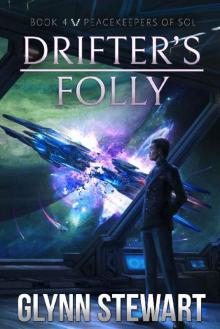 Drifter's Folly (Peacekeepers of Sol Book 4)
Drifter's Folly (Peacekeepers of Sol Book 4) Conviction (Scattered Stars: Conviction Book 1)
Conviction (Scattered Stars: Conviction Book 1) Fortitude (Scattered Stars: Conviction Book 4)
Fortitude (Scattered Stars: Conviction Book 4) Refuge
Refuge A Question of Faith: A Castle Federation Novella
A Question of Faith: A Castle Federation Novella Crusade (Exile Book 3)
Crusade (Exile Book 3) Raven's Peace
Raven's Peace A Darker Magic (Starship's Mage Book 10)
A Darker Magic (Starship's Mage Book 10) Fae, Flames & Fedoras
Fae, Flames & Fedoras Q-Ship Chameleon
Q-Ship Chameleon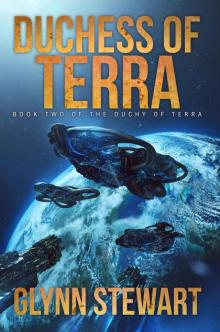 Duchess of Terra (Duchy of Terra Book 2)
Duchess of Terra (Duchy of Terra Book 2) Sword of Mars
Sword of Mars Rimward Stars (Castle Federation Book 5)
Rimward Stars (Castle Federation Book 5) Q-Ship Chameleon (Castle Federation Book 4)
Q-Ship Chameleon (Castle Federation Book 4) Hand of Mars (Starship's Mage Book 2)
Hand of Mars (Starship's Mage Book 2) Terra and Imperium (Duchy of Terra Book 3)
Terra and Imperium (Duchy of Terra Book 3) UnArcana Stars
UnArcana Stars The Terran Privateer
The Terran Privateer ONSET: To Serve and Protect
ONSET: To Serve and Protect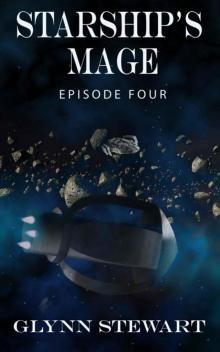 Starship's Mage: Episode 4
Starship's Mage: Episode 4 Operation Medusa (Castle Federation Book 6)
Operation Medusa (Castle Federation Book 6) ONSET: Blood of the Innocent
ONSET: Blood of the Innocent Starship's Mage: Episode 5
Starship's Mage: Episode 5 Hunter's Oath
Hunter's Oath Starship's Mage 2 Hand of Mars
Starship's Mage 2 Hand of Mars Mage-Provocateur (Starship's Mage: Red Falcon Book 2)
Mage-Provocateur (Starship's Mage: Red Falcon Book 2) ONSET: My Enemy's Enemy
ONSET: My Enemy's Enemy Blood Ward
Blood Ward ONSET: Stay of Execution
ONSET: Stay of Execution Mage-Provocateur
Mage-Provocateur Voice of Mars (Starship's Mage Book 3)
Voice of Mars (Starship's Mage Book 3) ONSET (Book 4): Stay of Execution
ONSET (Book 4): Stay of Execution Ashen Stars
Ashen Stars Children of Prophecy
Children of Prophecy Starship's Mage: Omnibus: (Starship's Mage Book 1)
Starship's Mage: Omnibus: (Starship's Mage Book 1) Avalon Trilogy: Castle Federation Books 1-3: Includes Space Carrier Avalon, Stellar Fox, and Battle Group Avalon
Avalon Trilogy: Castle Federation Books 1-3: Includes Space Carrier Avalon, Stellar Fox, and Battle Group Avalon Battle Group Avalon (Castle Federation Book 3)
Battle Group Avalon (Castle Federation Book 3) Stellar Fox (Castle Federation Book 2)
Stellar Fox (Castle Federation Book 2) Starship's Mage: Episode 3
Starship's Mage: Episode 3 Starship's Mage: Episode 1
Starship's Mage: Episode 1 Operation Medusa
Operation Medusa Agents of Mars (Starship's Mage: Red Falcon Book 3)
Agents of Mars (Starship's Mage: Red Falcon Book 3)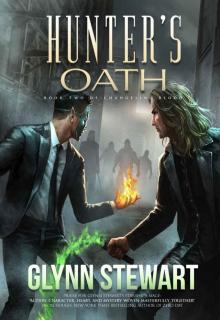 Hunter's Oath (Changeling Blood Book 2)
Hunter's Oath (Changeling Blood Book 2)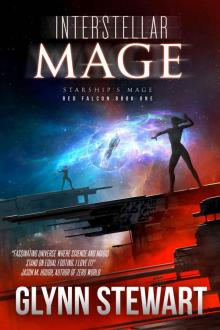 Interstellar Mage (Starship's Mage: Red Falcon Book 1)
Interstellar Mage (Starship's Mage: Red Falcon Book 1)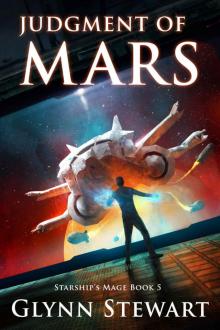 Judgment of Mars (Starship's Mage Book 5)
Judgment of Mars (Starship's Mage Book 5) Alien Arcana (Starship's Mage Book 4)
Alien Arcana (Starship's Mage Book 4) Space Carrier Avalon
Space Carrier Avalon Changeling's Fealty (Changeling Blood Book 1)
Changeling's Fealty (Changeling Blood Book 1) Interstellar Mage
Interstellar Mage Stay of Execution
Stay of Execution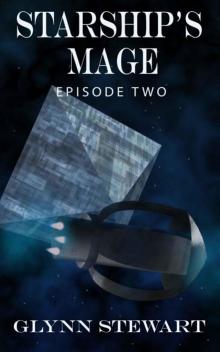 Starship's Mage: Episode 2
Starship's Mage: Episode 2